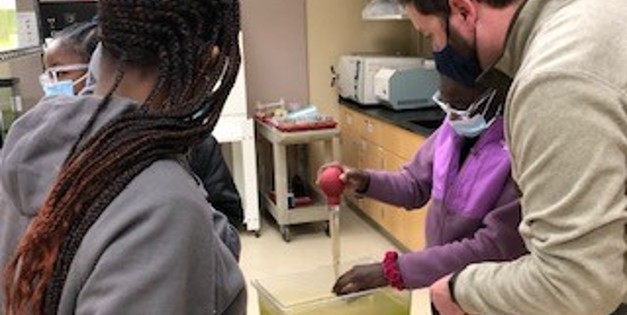Recently, Van Andel Institute for Education began welcoming students back to in-person learning at our main building. We’ve all been cautious; masks have been supplied to make sure everyone is staying safe. Nevertheless, it’s been very exciting. There’s nothing quite like a room of curious students who are ready to learn. The energy is almost tangible.
The experience has also allowed me to see some of my VAI colleagues in action after a season of teaching remotely. As someone who works primarily behind the scenes, I couldn’t help but be in awe of how these educators engaged their students. They knew exactly when to encourage and when to redirect their behavior. They knew how to keep a room focused, even when there were a hundred other distractions vying for attention. Most of all, they knew how to make learning memorable, meaningful, and fun!
The experience got me thinking about how we as educators can better engage our students and help them foster a growth mindset. So, in honor of colleagues, I’d like to share a few reflections I’ve gleaned while watching my colleagues practice student engagement:
Start Off Strong
Students respond to dynamic action. If you want them to stay engaged, make sure you hook them early. One way to accomplish this is through demonstrations. Create a chemical reaction during a Science class or recite a poem at the beginning of English. If you want to encourage collaboration, surveys are a good tool for sharing opinions. Other times, all you need is something they can touch, like a fossil or a model airplane. Don’t be afraid to jump into your lesson feet first!
Give Them a Reason
Don’t be fooled, “Why should I learn this?” is an important question. Students fare better when they have a relevant connection to the content. Have them keep a journal as a way of personalizing the information. For topics which involve multiple opinions or possible outcomes, draw a line in the room and have them choose a side. This is particularly useful when discussing literary themes, state and federal rights, and scientific inquiry. By putting the outcome in their hands, students become deeply invested in the journey.
Be Unpredictable
We all fall into our own routines, habits, and schedules. Constantly surprising students with improvisation or creativity feels like an impossible task. But teachers really are in a battle for their students’ attention, and the effort must be made to remain surprising. One approach is to always try new things. Use a new website, assign a new book, and construct a new activity. Keep students on their toes. Mix up the social groups in your classroom so students learn to be flexible. So long as you never fall into an established routine, chances are your students never will either.

